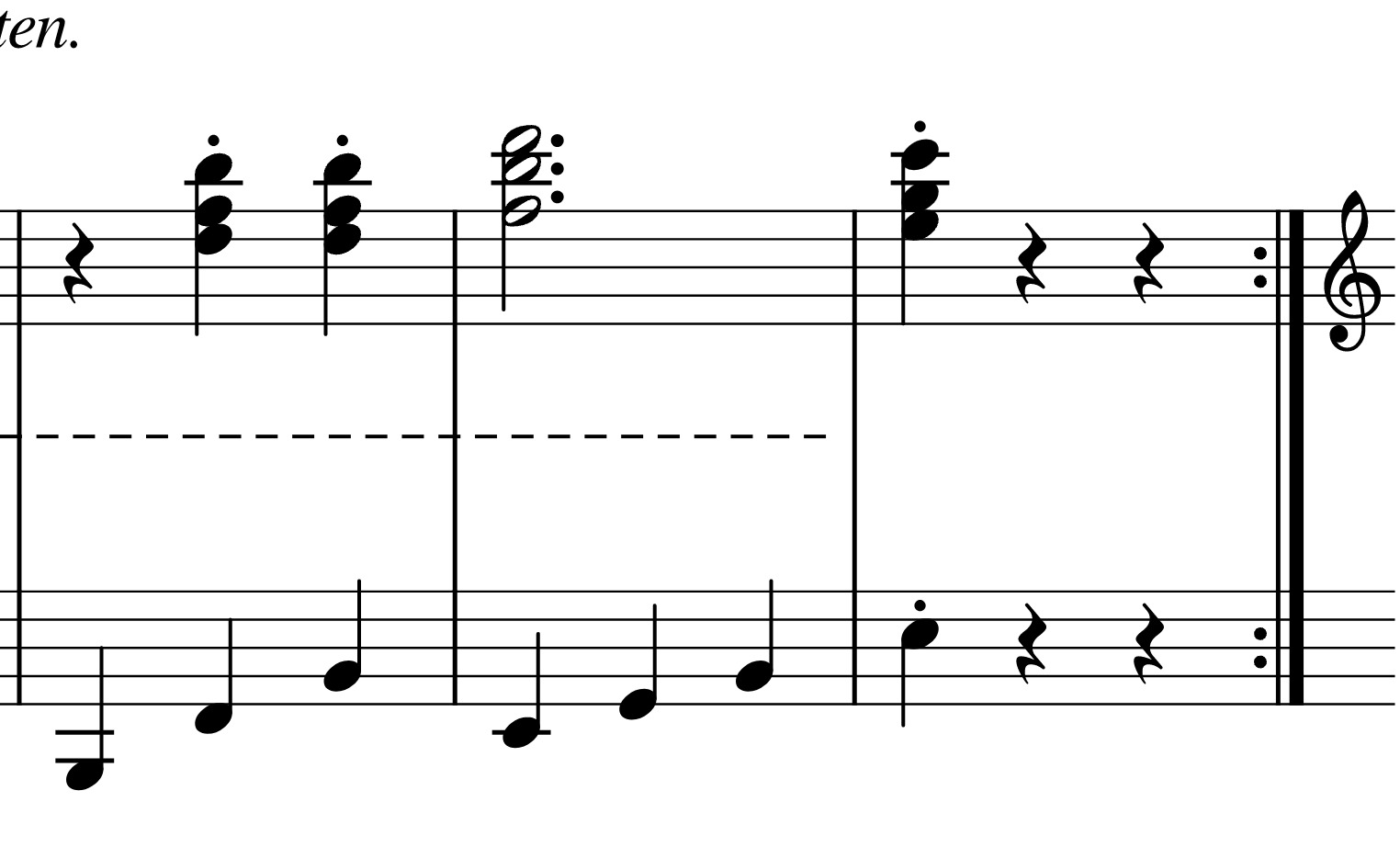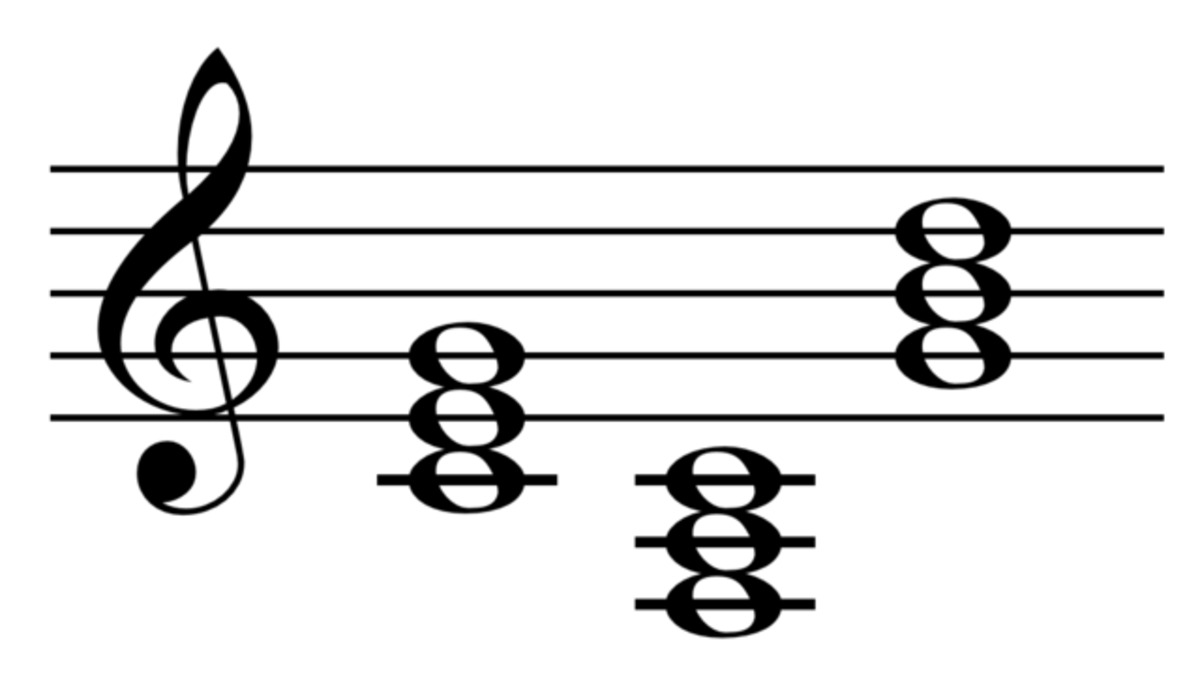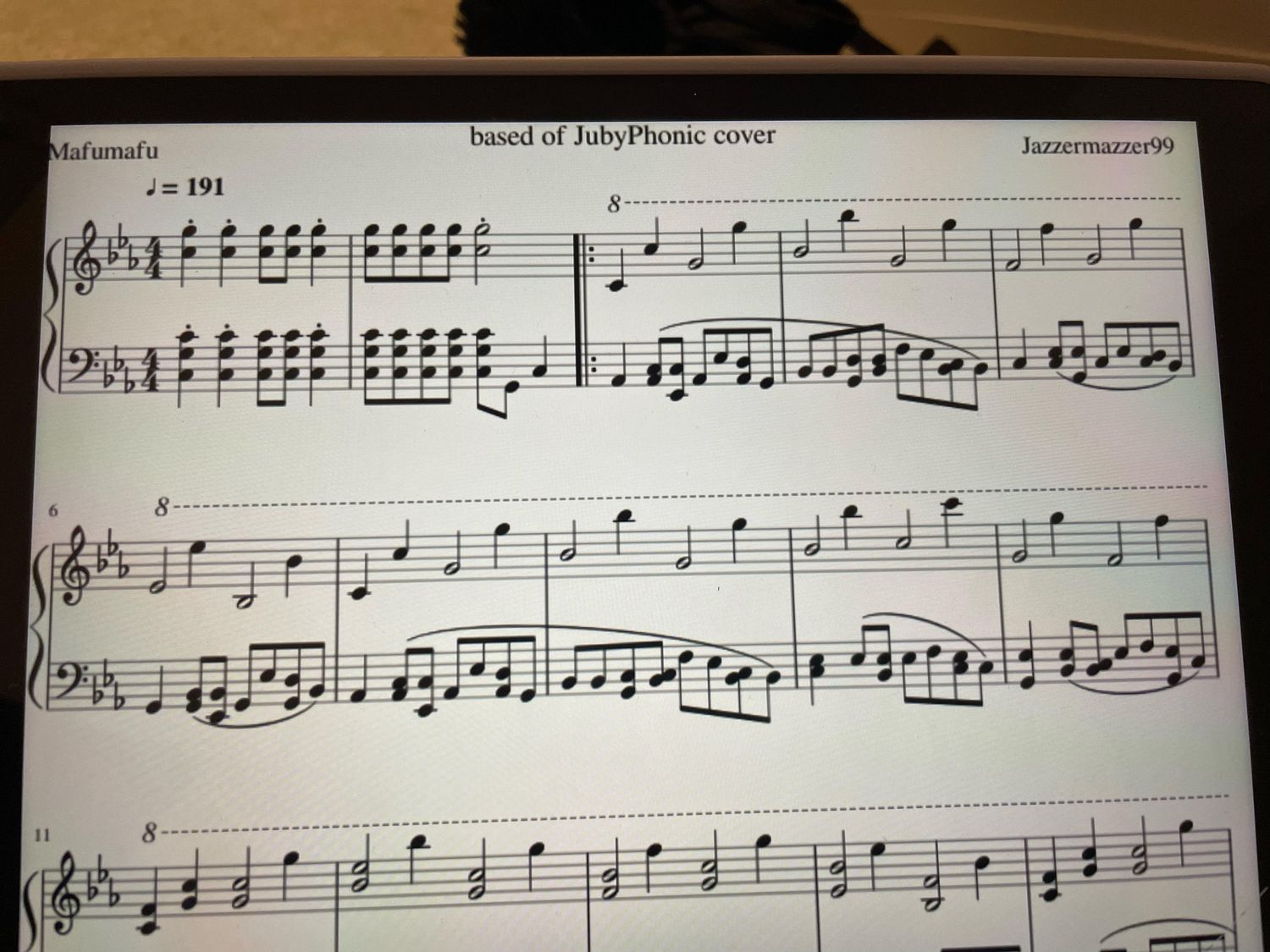Home>Production & Technology>Music Theory>What Is Scalar Variance In Music Theory


Music Theory
What Is Scalar Variance In Music Theory
Published: February 1, 2024
Discover the concept of scalar variance in music theory and how it relates to the study of music composition, harmony, and melody. Expand your understanding of music theory with this comprehensive guide.
(Many of the links in this article redirect to a specific reviewed product. Your purchase of these products through affiliate links helps to generate commission for AudioLover.com, at no extra cost. Learn more)
Table of Contents
- Introduction
- Definition of Scalar Variance
- Importance of Scalar Variance in Music Theory
- Examples of Scalar Variance in Different Musical Genres
- The Role of Scalar Variance in Composition and Improvisation
- Techniques for Incorporating Scalar Variance in Music
- Common Misconceptions about Scalar Variance
- Conclusion
Introduction
Welcome to the world of music theory! Music theory is the language that musicians use to understand and communicate the principles underlying the creation and performance of music. It helps us analyze and explain the structure, harmony, melody, rhythm, and other elements of music. One fascinating aspect of music theory is scalar variance, which plays a crucial role in shaping the tonality and character of a musical composition.
Scalar variance, at its core, refers to the idea of using different scales or modes within a musical composition. It involves the deliberate deviation from the standard major or minor scales in order to introduce unique tonal colors and flavors. This concept is the key to creating diversity, complexity, and interest in musical arrangements across various genres.
Understanding scalar variance is like discovering a world of endless possibilities. By exploring different scales, musicians can evoke a wide range of emotions, create distinctive melodies, and craft innovative harmonies. Whether you are a composer, performer, or music enthusiast, delving into the realm of scalar variance will greatly enhance your musical knowledge and expertise.
In this article, we will delve deeper into the concept of scalar variance, explore its importance in music theory, examine its applications in different musical genres, discuss its role in composition and improvisation, explore techniques for incorporating scalar variance, address common misconceptions, and conclude with a summary of its significance in the world of music.
Definition of Scalar Variance
Scalar variance refers to the intentional departure from the traditional major or minor scales in music composition. It involves the exploration and utilization of alternative scales or modes to introduce unique tonal characteristics and create a distinct musical expression.
In traditional Western music theory, the major and minor scales serve as the foundation for a vast majority of compositions. The major scale, with its bright and uplifting sound, and the minor scale, with its melancholic and introspective quality, have been the go-to choices for many composers throughout history. However, scalar variance breaks away from these familiar patterns and allows musicians to explore a wide array of scales and modes beyond the conventional diatonic framework.
Scalar variance encompasses a variety of scales and modes, including the melodic minor, harmonic minor, pentatonic, blues, augmented, diminished, and many others. Each of these scales possesses its own unique set of intervals and tonal characteristics, offering a distinct tonal palette to composers and musicians.
By incorporating scalar variance into their compositions, musicians can introduce intriguing melodic patterns, unexpected harmonic progressions, and unconventional tonal colors. This adds complexity, depth, and diversity to the overall musical experience.
It’s important to note that scalar variance doesn’t necessarily mean abandoning the major or minor tonality altogether. Instead, it showcases the ability to incorporate different scales and modes alongside the traditional tonal framework, allowing for a more nuanced and expressive musical language.
Scalar variance can be applied to a single composition or used throughout an entire music piece. It can be utilized to create contrasting sections within a composition, establish a specific mood or atmosphere, or even serve as a foundation for improvisation.
Now that we have defined scalar variance, we can explore its significance in music theory and how it shapes the musical landscape across different genres.
Importance of Scalar Variance in Music Theory
Scalar variance plays a crucial role in music theory, bringing richness, complexity, and versatility to compositions across various genres. It allows musicians to break free from traditional tonal constraints and explore a vast array of scales and modes, opening up endless creative possibilities. Here are some reasons why scalar variance is important in music theory:
1. Musical Expression: Scalar variance enables musicians to express a wide range of emotions and moods. By using different scales and modes, composers can create melodies and harmonies that evoke specific feelings, whether it’s joy, sadness, tension, or excitement. This adds depth and nuance to the musical composition, enhancing its emotional impact on the listener.
2. Unique Tonal Colors: Incorporating scalar variance allows musicians to introduce unique tonal colors and flavors into their compositions. Each scale or mode has its own distinct set of intervals, which can drastically alter the overall sound and character of the music. From the exotic and mysterious sounds of the Phrygian mode to the bluesy and soulful tones of the pentatonic scale, scalar variance offers a diverse palette of tonal possibilities.
3. Creativity and Innovation: Scalar variance encourages musicians to think outside the box and experiment with unconventional tonalities. By deviating from traditional scales, composers can create fresh and innovative musical ideas that push the boundaries of traditional music. This fosters creativity and encourages the exploration of new sonic territories.
4. Genres and Styles: Scalar variance is essential in defining the distinct sound and style of various musical genres. Different genres, such as jazz, blues, flamenco, and world music, heavily rely on the use of alternate scales and modes to establish their characteristic sound. For example, the Mixolydian mode is often associated with blues and rock music, while the Dorian mode is frequently employed in jazz compositions. Understanding the use of scalar variance in different genres is key to mastering their unique musical language.
5. Harmonic Complexity: Scalar variance adds complexity and richness to harmonic progressions. By incorporating different scales and modes, composers can create interesting chord progressions that go beyond the traditional tonic-dominant relationships. This enhances the harmonic texture of the music and can lead to unexpected and captivating musical moments.
In summary, scalar variance is a fundamental concept in music theory that allows musicians to explore new tonal territories, express a wide range of emotions, and create unique and innovative compositions. Understanding and incorporating scalar variance in your musical journey will undoubtedly expand your creative horizons and deepen your understanding of music theory.
Examples of Scalar Variance in Different Musical Genres
Scalar variance is prevalent in various musical genres, contributing to their distinctive sound and style. Let’s explore some examples of scalar variance in different genres:
1. Jazz: Jazz music is known for its improvisation and harmonic complexity, both of which heavily rely on scalar variance. Jazz musicians often incorporate modes such as the Dorian, Mixolydian, and Lydian scales to introduce tension and color in their solos and compositions. For example, the use of the Dorian mode in tunes like “So What” by Miles Davis creates a unique and modal jazz sound.
2. Blues: The blues genre incorporates scalar variance through the extensive use of the blues scale, which includes distinct flattened notes like the “blue note.” This scale is the essence of blues music, giving it its signature melancholic and expressive sound. The mixture of these specific intervals creates the emotional depth and intensity associated with the blues genre.
3. Indian Classical Music: Scalar variance plays a vital role in Indian classical music. The use of ragas, which are melodic structures or scales, enables musicians to convey specific emotions and moods. Each raga is associated with different scalar patterns and has its own set of rules and guidelines for performance. The exploration and mastery of various ragas allow for infinite melodic possibilities within this rich musical tradition.
4. Flamenco: Flamenco is a traditional music style from Spain that incorporates scalar variance through the use of the Phrygian mode. The Phrygian mode, with its distinct minor sound characterized by a lowered second scale degree, creates the passionate and dramatic atmosphere associated with flamenco music. This mode is a crucial element in defining the flamenco style.
5. Contemporary Pop and Rock: Scalar variance can be found in contemporary pop and rock music as well. Artists often incorporate different scales and modes to add unique flavors to their compositions. For instance, the Mixolydian scale can be heard in songs like “Sweet Child o’ Mine” by Guns N’ Roses, adding a distinct rock sound to the guitar solos.
These are just a few examples of scalar variance in different genres. The use of alternative scales and modes allows musicians to shape the tonal landscape of various musical styles, creating a diverse and captivating listening experience.
The Role of Scalar Variance in Composition and Improvisation
Scalar variance plays a vital role in both composition and improvisation, allowing musicians to explore new tonal possibilities and unleash their creativity. Here’s how scalar variance influences these aspects of music:
Composition: Scalar variance provides composers with a wide range of melodic and harmonic options, enabling them to create unique and captivating compositions. By utilizing different scales and modes, composers can craft melodies that are outside of the traditional major or minor tonalities, leading to fresh and interesting musical ideas. Scalar variance also allows for the creation of complex and dynamic harmonic progressions, pushing the boundaries of traditional functional harmony. Composers can experiment with modal interchange, borrowing chords from different scales or modes, to create unexpected and intriguing harmonic textures.
For example, in Debussy’s composition “Clair de Lune,” scalar variance is used to create an impressionistic and dreamlike atmosphere. The piece incorporates the whole-tone and pentatonic scales, which contribute to the ethereal and evocative quality of the music.
Improvisation: Scalar variance is particularly significant in improvisation, as it provides musicians with a toolkit of scales and modes to draw from during their spontaneous performances. Improvisers can use scalar variance to add variety and depth to their solos, creating captivating musical moments. By exploring different scales and modes, improvisers can introduce tension, color, and unexpected melodic twists in their solos. This enables them to respond intuitively to the musical context and express their individuality as performers.
For example, in jazz improvisation, scalar variance is a cornerstone of the improviser’s toolkit. Musicians often navigate through various scales and modes, applying them to different chord progressions. They might use the altered scale over a dominant chord or explore the melodic minor scale over a minor chord, incorporating scalar variance to create melodic and harmonic interest.
Scalar variance in composition and improvisation offers musicians the freedom to break away from traditional tonalities and explore new sonic territories. It adds depth, complexity, and individuality to their musical expressions, allowing them to create compositions and improvisations that are unique and captivating.
Techniques for Incorporating Scalar Variance in Music
There are several techniques that musicians can employ to incorporate scalar variance into their compositions and improvisations. These techniques allow for the exploration of diverse tonalities and the creation of unique musical expressions. Here are some common approaches:
1. Modal Interchange: Modal interchange involves borrowing chords from different scales or modes to create interesting harmonic progressions. For example, a composition in a major key might include chords borrowed from the parallel minor, introducing scalar variance and adding a touch of melancholy. This technique can also be applied in improvisation, where musicians can seamlessly transition between scales to create tension and release.
2. Modal Vamping: Modal vamping refers to repeating a chord progression or vamp while changing the underlying scale or mode. This technique is commonly used in jazz fusion and contemporary genres. By shifting the tonal center and alternating between different scales or modes, musicians can create a sense of evolving tonality and add depth to their compositions or improvisations.
3. Using Non-Diatonic Scales: Non-diatonic scales, such as the whole-tone scale, diminished scale, or augmented scale, offer unique and unconventional tonal colors. Incorporating these scales into compositions or improvisations can create a sense of tension and unpredictability. These scales are commonly used in jazz, contemporary classical, and fusion genres to add a modern and sophisticated touch to the music.
4. Hybrid Scales and Superimposition: Hybrid scales involve combining elements from multiple scales or modes to create unique melodic or harmonic patterns. For example, by superimposing the Dorian and Phrygian scales, musicians can create “Dorian b2” or the “Phrygidorian” scale, which adds an exotic and mysterious flavor to the music. Exploring these hybrid scales and experimenting with superimpositions can lead to innovative and captivating musical ideas.
5. Chromaticism: Chromaticism involves incorporating chromatic tones, which are not part of the diatonic scale, into compositions or improvisations. This technique can create tension, enhance harmonic richness, and add color to the music. Chromaticism is commonly used in jazz, blues, and contemporary classical music to create expressive and adventurous musical passages.
These techniques provide a starting point for musicians to incorporate scalar variance into their musical creations. Experimenting with these approaches and exploring the vast world of scales and modes will open up new possibilities and expand musical horizons.
Common Misconceptions about Scalar Variance
While scalar variance is a fascinating concept in music theory, there are some misconceptions that can lead to misunderstandings. Let’s address and clarify these common misconceptions:
1. Scalar Variance is Only for Advanced Musicians: One common misconception is that scalar variance is a concept reserved for advanced musicians or music theorists. In reality, scalar variance is accessible to musicians of all levels. Beginners can begin exploring different scales and modes early on in their musical journey, opening up new tonal possibilities and enhancing their creativity from the start.
2. Scalar Variance Results in Dissonance and Chaos: Another misconception is that scalar variance leads to dissonance and chaos in music. While scalar variance can introduce unique tonal colors and unconventional harmonies, it doesn’t automatically result in dissonance. Skilled musicians use scalar variance intentionally, balancing tension and consonance to create musical interest. Scalar variance can be applied to create everything from delicate and introspective compositions to high-energy and exciting musical landscapes.
3. Scalar Variance is Limited to Certain Genres: Scalar variance is not restricted to specific musical genres. While certain genres may heavily utilize scalar variance, such as jazz or flamenco, the concept is applicable across a wide range of musical styles. From classical compositions to contemporary pop and rock music, scalar variance can be employed to add depth and creativity to various genres.
4. Scalar Variance Requires extensive Theoretical Knowledge: Some may believe that extensively studying music theory and scales is necessary to incorporate scalar variance effectively. While a fundamental understanding of scales and modes is helpful, it’s not a prerequisite for applying scalar variance. Musicians can explore different scales and experiment with alternative tonalities intuitively and by ear, allowing for a more organic and creative approach to incorporating scalar variance.
5. Scalar Variance Should Be Used Exclusively: Scalar variance should not be seen as a replacement for traditional tonalities. It is more effective when used alongside conventional major and minor scales. The combination of scalar variance with familiar tonalities creates a harmonious and balanced musical language. Scalar variance should be seen as an enhancement to traditional tonal structures rather than a complete departure from them.
By dispelling these misconceptions about scalar variance, musicians can embrace this concept confidently and explore its vast potential to enhance their musical compositions and performances.
Conclusion
Scalar variance is a fascinating and essential concept in music theory that offers a myriad of possibilities for composers, performers, and music enthusiasts. By deviating from the traditional major and minor scales, scalar variance allows musicians to explore different scales, modes, and tonalities, adding depth, complexity, and creativity to musical compositions and improvisations.
We have explored the definition of scalar variance and its importance in music theory. Scalar variance provides musicians with the tools to express a wide range of emotions, create unique tonal colors, and push the boundaries of traditional tonalities. We have seen examples of scalar variance in different musical genres, showcasing how it influences the distinct sounds and styles of various musical traditions.
The role of scalar variance in composition and improvisation has been highlighted, emphasizing how it enables musicians to craft captivating melodies, harmonies, and improvisations. Techniques for incorporating scalar variance, such as modal interchange and modal vamping, have been discussed, providing musicians with practical approaches to integrate scalar variance into their musical creations.
Addressing common misconceptions about scalar variance has helped to dispel any misunderstandings and encourage musicians to confidently embrace this concept. The key takeaway is that scalar variance is accessible and applicable to musicians of all levels, across a wide range of genres, and doesn’t require extensive theoretical knowledge to be creatively utilized.
In conclusion, scalar variance is a powerful tool that empowers musicians to explore new tonal territories, express their creativity, and elevate their musical compositions and performances. By incorporating scalar variance into their musical journeys, musicians can unlock endless possibilities, broaden their musical horizons, and create unique and captivating musical experiences for themselves and their audiences.











